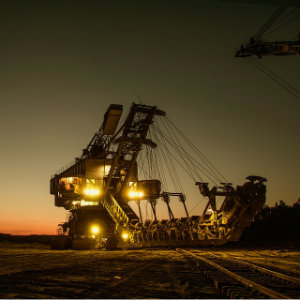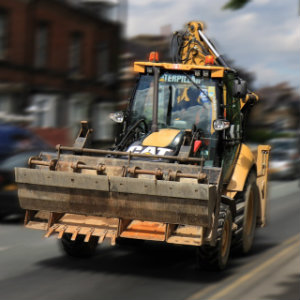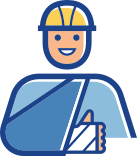The Power of Heavy Machinery
These machines are extremely powerful and have the potential to make difficult construction projects much more manageable. However, with such great power comes the potential for serious damage when mistakes are made.
That's why construction sites need to implement rigorous training for the operators of these machines, and consistently evaluate the site for proper safety standards. Examples of heavy machinery include:
- Bulldozers
- Cranes
- Forklifts
- Tractors
- Compactors
- Cherry pickers
- Excavators
- Backhoe loaders
- Pipelayers
- Pavers
- Graders
- Dump trucks & haulers
Proper Safety Standards
Unfortunately, incidents involving these "powered industrial trucks" were the #6 most commonly cited OSHA safety violation in 2016. It's important to hold negligent parties who contribute to heavy machinery accidents responsible for their carelessness. Neglecting proper safety standards with these machines can lead to permanent injuries and fatalities.
Workers deserve to feel safe while on the job. No construction worker should have to worry about permanent disability or death while operating one of these machines. Every construction site that uses heavy machinery should adhere to the following standards:
Guarded Moving Parts
Guards are necessary for many pieces of construction equipment, from hand-held power tools to heavy-duty industrial vehicles. These guards prevent clothing and body parts from being caught in the moving parts and prevent industrial vehicles from being accidentally started.
Machinery Properly Secured
OSHA also suggests that employers "provide a lock-out/tag-out program" to prevent accidental start-ups. These programs require that the machines be rendered inoperative before maintenance work can begin. They also require that "bulldozer and scraper blades, end-loader buckets, dump bodies, and similar equipment must be blocked or fully lowered when being repaired or not in use."
Preventative Measures for Tip-overs
OSHA requires employers to designate a skilled person for inspecting heavy machinery for tip-over hazards. This person is required to identify any hazardous working conditions related to the machinery, and ensure that the machinery is positioned on a surface which can support the heavy weight without the risk of tipping over. These machines must also be equipped with protective structures to prevent tip-overs and rollovers. Furthermore, employees should be required to wear seatbelts while operating heavy machinery.
Preventative Caught-In or -Between Measures
Employers must also regularly implement practices which reduce the risk of a worker being pinned in between heavy machinery and another object, such as a wall or other piece of equipment. This can be accomplished by only allowing necessary personnel into demolition operations, using proper bracing between heavy plates, and by carefully planning travel routes for powered industrial vehicles.
Common Accidents
Each piece of heavy machinery has the potential to inflict a variety of injuries on the operator. Examples of common injuries include:
Limbs and Digits Caught
Sometimes, hands, fingers, and other limbs and digits may get caught in the moving parts of a heavy machine. Workers should check to make sure machine guards are in place to prevent exposure to gears and moving parts.
Runover & Struck-By Accidents
Sometimes, a powered industrial truck may unintentionally start and strike or run over a construction worker. These accidents often result from a lack of safety guards over the vehicle's ignition. In other situations, the vehicle's operator may not have seen the victim because of an obstructed view. In either case, proper safety standards would have likely prevented the accident. OSHA lists "struck by object" as the second leading cause of construction fatalities (at 9.6%), and 75% of struck by accidents involve heavy machinery,
Caught In-Between
As we mentioned earlier, caught in-between accidents rank #4 in construction fatalities. While struck-by accidents refer to incidents where the impact of a single object caused the injury, these injuries are caused when a worker becomes pinned between two or more objects. For example, a worker may suffer serious injuries after a piece of clothing becomes caught in the moving parts of a powered industrial vehicle.
More Info For Injured Workers










